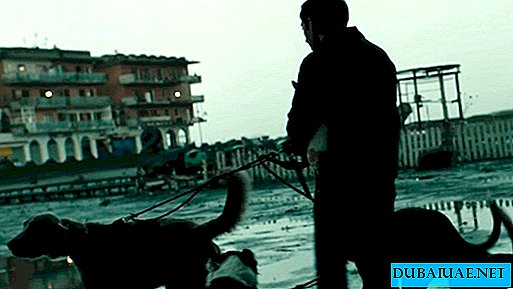 Louis Vuitton has a special place in the minds of modern fashion fans. Despite the fact that the first Louis Vuitton travel trunks appeared more than a century and a half ago, the products of this company to this day do not leave the pages of fashion magazines, since the brand is one of the few aristocrats of style and taste, because it lives on the principle of “expensive and cool”.
Louis Vuitton has a special place in the minds of modern fashion fans. Despite the fact that the first Louis Vuitton travel trunks appeared more than a century and a half ago, the products of this company to this day do not leave the pages of fashion magazines, since the brand is one of the few aristocrats of style and taste, because it lives on the principle of “expensive and cool”.
This year, the LOUIS VUITTON House turns 153 years old - more than an impressive age, given the rapid development of the modern fashion industry, with its strict laws, vagaries and rapid change of trends. The company manages to unbelievably retain in its production leather goods that have already become classics of luxury and introduce new, ultramodern designs and technologies. LOUIS VUITTON is constantly expanding, and today it owns 15 production workshops, an international logistics center and more than 360 exclusive boutiques in 51 countries.
Packer No. 1
The LOUIS VUITTON brand owes its appearance to the well-known master of trunks and travel accessories in the second half of the 18th century. The great master Louis Vuitton was born on August 4, 1821 in the French city of Anshet. Already at birth, his fate was a foregone conclusion - because his father was a talented carpenter, and from early childhood instilled in his son a love of wood. When Louis turned 14, he decided that luck awaited him in the capital: he had to walk 400 km to Paris.
At the age of sixteen, he was accepted by a student to the Paris chest-making master Monsieur Marechal and began to produce travel suitcases. Gradually, the young man made significant progress in this area, his fame as a wonderful master was rapidly growing. In those days, many of those who had chic wardrobes at their disposal could not pack their own things in order to go on a trip. There was a whole profession for this. Louis quickly achieved success in packing clothes, so he was often invited to the homes of wealthy ladies serving long trips. Soon he became the favorite "packer" of the wife of Napoleon III Empress Eugenia and her maid of honor, which gave him the opportunity to often appear in the Tuileries Palace.
In 1854, the 33-year-old Louis opened his own LOUIS VUITTON MALLETIER store on the Rue Neuve des Capucines, near the famous haute couture houses on Place Vendome.
However, the main dawn of Louis Vuitton only began after 1858, when Louis Vuitton created a real masterpiece - a flat suitcase. This type of suitcase made a real revolution in baggage culture and was an overwhelming success, because before the lids of the chests were rounded so that water drained from them, which made it difficult to transport luggage, since this form did not allow to put the chests on top of each other. Now, Wuyton’s products could be easily folded in the luggage compartments of trains and ships, significantly saving scarce luggage space. The new generation chests were not only incredibly practical and durable, but also aesthetic - they were made using the elegant gray cloth TRIANON CANVAS. Vuitton's innovations were so impressive that orders rained down on him one by one. In 1860, Louis Vuitton opened a new workshop for the production of travel accessories in Agnières-sur-Seine, where he hired 60 craftsmen, in line with the rapidly growing demand.
When Vuitton's first store completely ceased to cope with the flow of customers, the craftsman moved to Rue Scribe. At the same time, he decided to completely concentrate on making chests. Among his clients were many famous people of that era, from the Spanish king Alfonso XII and the Egyptian lord Ismail Pasha to the Russian emperor Nicholas I. Louis Vuitton often received special orders: for example, for the French count Savornian de Brazz, a famous traveler in Africa, he made a special folding bed for sleeping. The quality of materials, interior decoration and decoration of products put his brand several steps higher than competing firms. Perhaps the most important role in the success of the LOUIS VUITTON brand was played by its ability to meet the new requirements of the travel industry, which began to change rapidly in the second half of the 19th century with the development of new means of transportation, Vuitton developed special wardrobe chests for sleeping cars and a lighter version - a suitcase enjoyed great popularity among the English aristocracy.
Georges Wuitton
In 1880, the reins of the company LOUIS VUITTON passed to the son of Louis Vuitton - Georges. It belongs to him the glory of the man who turned his father's business into an international corporation. The first LOUIS VUITTON overseas office was opened on his initiative in London in 1885.
Georges Vuitton never missed a single international exhibition and fair, where wealthy people from all over the world flocked. By the end of the 19th century, LOUIS VUITTON branches were opened in New York and Philadelphia, and the London store was moved to the prestigious New Bond Street boutique alley. The distribution network gradually included Boston, Chicago, San Francisco, Brussels, Buenos Aires, Nice, Bangkok and Montreal.
In 1914, under his leadership, the company built a building on the Champs Elysees, which became the central point of the entire LOUIS VUITTON distribution network. The greatest merits of Georges Vuitton are two inventions. This is the world-famous company logo MONOGRAM CANVAS, whose interwoven graphic LV symbols were inspired by Japanese designs of the late Victorian era that were fashionable at that time. It is noteworthy that in the history of world fashion this was the first designer logo, however, in addition to the aesthetic function, it had to play the role of protection against fakes that appeared. Another pioneering idea was the pentagonal lock, which has become a classic accessory company. Each lock was encoded, and the customer, when buying this or that accessory, received a code that could protect his luggage from unauthorized opening.
Gaston Vuitton
In 1936, George Vuitton died, his son Gaston replaced him, who immediately faced a significant decrease in special orders. The company's sales more than ever began to depend on catalogs that offered a wide range of products, including special cases for typewriters, radios and books, cases for rifles and wine bottles.
 In addition to the fact that Gaston Vuitton led the family company, he was appointed vice president of the Salon of Decorative Arts, which greatly facilitated his establishment of contacts with famous artists of the time, whom he invited more than once to participate in the development of the next model range. In addition, Gaston inherited inventive talent from his father and grandfather - he tried to differentiate the company's products as much as possible, developing various accessories that were not directly related to the theme of travel.
In addition to the fact that Gaston Vuitton led the family company, he was appointed vice president of the Salon of Decorative Arts, which greatly facilitated his establishment of contacts with famous artists of the time, whom he invited more than once to participate in the development of the next model range. In addition, Gaston inherited inventive talent from his father and grandfather - he tried to differentiate the company's products as much as possible, developing various accessories that were not directly related to the theme of travel.
Among his creations were items for table setting and manicure sets. Gaston's love of art, his sense of style and ingenuity have influenced the entire range of LOUIS VUITTON products. He managed to bring it to the maximum level of strength and practicality. Gaston's merit is the modernization of the classic MONOGRAM CANVAS design. It was on his initiative that the accessories of this line were given great flexibility due to new materials that were previously used only in the manufacture of simple and formal travel bags.
In 1954, on the occasion of the centennial, LOUIS VUITTON moved from Champs Elysees to Avenue Morseau. Since the advent of high-speed trains, planes and cars, long journeys gradually receded into the past, the company began to create new lines of accessories made of soft materials.
Profitable 70-80s
In 1977, Gaston Vuitton's son-in-law Henri Recamier became the head of the company. Under his management, sales grew from $ 20 million in 1977 to nearly $ 1 billion in 1987. Recamier understood that retail was the main source of income. In order to succeed in the international market, LOUIS VUITTON stores were opened around the world, and Asia became the most important sales market.
At the initiative of CFO Joseph Lafont, in 1984 LOUIS VUITTON made the first offer of shares on the New York and Paris exchanges. In general, the 80s were very profitable for the company, and a lot of money was spent on brand promotion. In 1983, LOUIS VUITTON sponsored the AMERICA'S CUP regatta. In 1986, the main Parisian store moved onto the street of luxury boutiques Avenue Montaigne. The factory in Anye has switched to new laser technologies. Under Recamier’s management, LOUIS VUITTON began acquiring companies with a reputation for producing high-end luxury products. So the shares of GIVENCHY House and the producer of expensive champagne VEUVE CLIQUOT were bought.
Great merger
In June 1987, one of the most important transactions in the history of the global luxury industry was completed. The merger of two major "actors" of the French business scene - the company LOUIS VUITTON and the concern MOET-HENNESSY, resulting in the birth of the future giant of the luxury industry - the LVMH concern. The merger was worth $ 4 billion. It enabled LOUIS VUITTON to increase its luxury investment costs and save MOET-HENNESSY from the threat of an unfriendly takeover. According to the terms of the transaction, the merger did not affect the autonomy of each company, management and branches. As a result, 60% of LOUIS VUITTON, owned by the Vuitton and Recamier families, turned into a 17% LVMH ...
Fame for the LOUIS VUITTON brand as a trendsetter in fashion and style, and not just a manufacturer of bags and suitcases, came only in 1998, when the company launched the first collection of clothes, and also opened shoe, accessories and jewelry departments. This is largely due to Marc Jacobs, who was appointed as the artistic director of LOUIS VUITTON in 1997. It was he who created the first women's pret-a-porter collection from LOUIS VUITTON, thereby adding freshness and piquancy to the style of the famous French brand.
In addition, Jacobs now creates more and more unique and stunning things with the MONOGRAM branded canvas: it can be made from denim, be perforated, varnished, colored - and long-time customers accept these transformations with a bang.
Today, “vuittonomania” is considered a worldwide phenomenon: millions of fashionistas around the world are trying to get at least some thing with the LV monogram. House products have only one drawback - LOUIS VUITTON handbags are forged much more often than all the others. And yet, acquiring the things of the VUITTON fashion house, it is impossible to get rid of the feeling of one's involvement in the image created once by Louis Vuitton. There is nothing to be done, LOUIS VUITTON is still “expensive and cool”.










